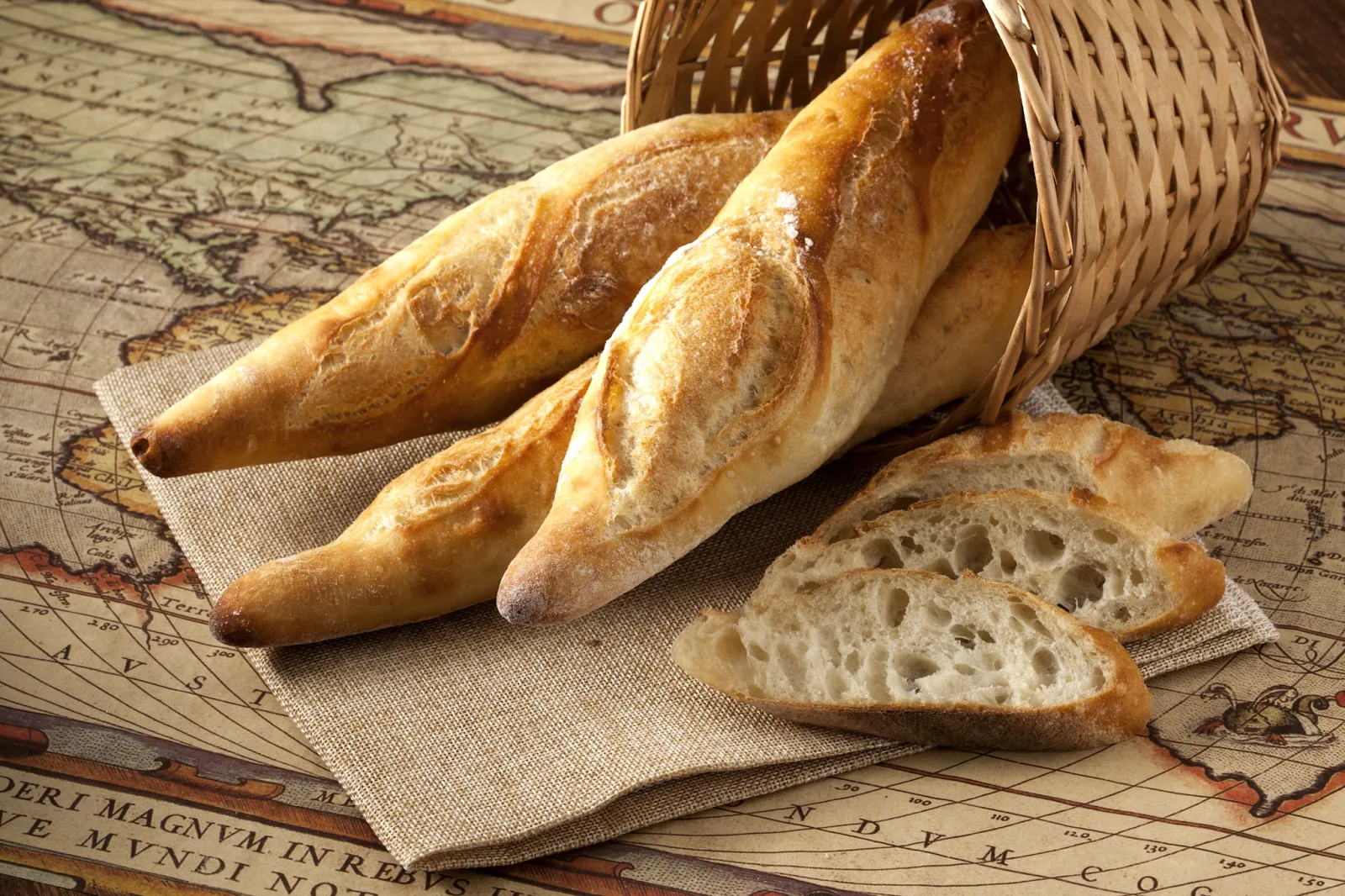Baguette, the long bread with a crunchy crust and soft interior, is not just a food item but a cultural symbol of France. Have you ever wondered how to enjoy a baguette in the most “authentic French” way? Join “Travel the World” as we explore the history and tips for savoring baguettes, allowing you to fully appreciate the special flavors of this renowned bread.
The History of the Baguette: More Than Just Bread
The baguette, whose name derives from “baculum” in Latin, meaning “stick,” carries a fascinating historical tale. There are various theories about the origin of this bread.
One theory posits that during Napoleon’s time, soldiers needed to travel frequently. To aid this, bakers innovated by creating elongated bread that could easily fit into their pockets. Furthermore, the long shape allowed for faster baking than round loaves, catering to military needs.

Another theory suggests baguettes originated from Viennese bread (Viennoiserie) introduced to France in 1839. However, French baguettes differ in quality and taste, as Viennese breads are softer, slightly sweet, and have a denser crumb.
Many believe the baguette hails from Austria, tracing back to the 18th century when Marie Antoinette, originally Austrian, became Queen of France. She brought Vienna’s top bakers to serve royal meals. Thus, Austrian bread made its way into France, initially exclusive to nobility. After the French Revolution, baguettes became accessible to everyone.
Post-World War II, baguettes became a staple nationwide, standardized at 80cm in length and weighing 250g. Over time, they have undergone various regional transformations with names like flute (flute), couronne (crown), and ficelle (thin and long like string). In 1993, French law mandated that baguettes be handcrafted, preserving this culinary emblem from industrial production.
“Le Décret Pain”: The Unwritten Rule of Baguette Bread
The importance of baguette in French culture is exemplified by “Le Décret Pain” (The Bread Decree), which sets strict guidelines for its preparation. Wheat flour/baking flour, yeast, water, and salt are mandatory ingredients, with small amounts of bean flour, soybean flour, or wheat malt flour permitted. The bread must weigh 250 grams.
Crucially, baguettes must be produced locally by hand. The baker mixes yeast and water, adding flour to form a smooth dough. The dough should have about 50% water content. It is placed on cloth and baked on perforated trays for even heat distribution. When the crust turns golden brown, the crumb is coffee-colored with a light, airy texture, dusted with white flour—a perfect baguette emerges.
Tips for Enjoying a French Baguette to the Fullest
French people are discerning in their baguette evaluation. A delicious baguette must have a hard, crunchy crust with a rich golden hue, a coffee-colored soft crumb that springs back to its original thickness after being compressed by two fingers. Crafting such a bread requires approximately four hours from kneading to baking.
So, how do you enjoy a baguette in the true French style?
- Eat it Plain: Break the bread into bite-sized pieces and relish the crunchy crust and soft interior.
- Pair with Butter: Spread a thin layer of butter, adding richness and allure to the baguette.
- Serve with Jam: Smear jam on the bread for a sweet treat, ideal for breakfast.
- Dip into Coffee or Hot Chocolate: A traditional French way to enjoy baguettes, especially in the morning.
- Make a Sandwich: Slice the baguette open and add pâté, cheese, or various jams to craft a tasty sandwich.
Baguette: An Intangible Cultural Heritage of Humanity
In 2022, UNESCO recognized “The Art of Breadmaking Baguette” as an intangible cultural heritage of humanity, affirming its significant cultural value.
Today, baguettes can be readily found in various places, from mini supermarkets to traditional bakeries, known as “la boulangerie” in France. For the finest baguette experience, purchase from boulangerie shops where breads are crafted by hand on-site.
Every year, France hosts “Le Grand Prix de la Baguette,” a competition seeking the best baguette maker in the city. The winner receives a medal, cash prize, and the honor of being the official bread supplier for the Champs-Élysées Palace for a year. This accolade not only brings prestige to the baker but boosts sales by 30-40%.
Conclusion
A baguette is more than just food; it’s an integral part of French culture. With the tips from “Travel the World” for enjoying an authentic French baguette, you will have the opportunity to dive deeper into this culinary icon. Try visiting a French bakery and savoring a piping hot baguette!